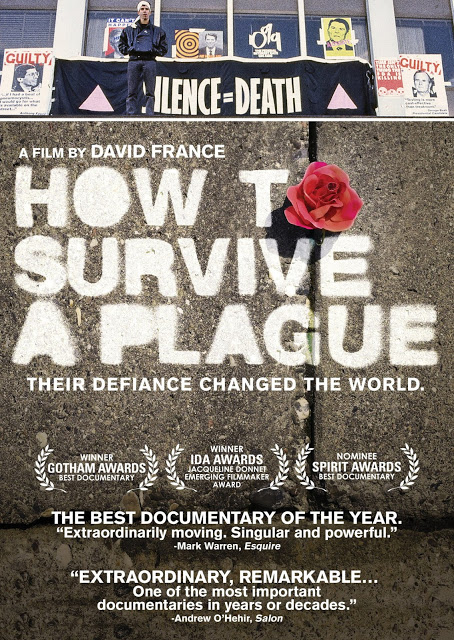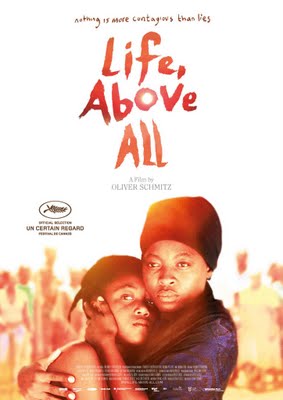At the beginning of the AIDS epidemic, I was a child and only vaguely aware of the crisis as hundreds of people, mostly young gay men at that time, were dying from an unknown virus with no cure in sight. As a teen in the late eighties and early nineties, I do remember seeing the “Silence = Death” posters, t-shirts, and buttons with the iconic pink triangle, but I realize now that I did not know the full scope of what it all meant. So I was intrigued to watch the documentary How to Survive a Plague directed by journalist David France. Nominated this year for an Oscar in the Best Documentary Feature category, How to Survive a Plague chronicles the organization ACT UP (AIDS Coalition to Unleash Power) and its offshoot TAG (Treatment Action Group) from 1987 to 1996 and these organizations’ dedicated efforts to pressure the United States government and other authorities to prioritize HIV/AIDS research and treatment and to approach the epidemic as a healthcare emergency and not merely an isolated scourge among homosexual men.
| “Silence = Death” |
Director David France, who was a journalist at the time these events were unfolding, has said that his goal as a journalist and then as a filmmaker was to bear witness. Consequently, the film is a very detailed account of the power of grassroots activism. Not only did these activists–gay and straight, young and old, male and female, healthy and dying–use protest in the streets as a means of garnering attention to what activist and playwright Larry Kramer described as a plague that was killing hundreds of thousands, but they educated themselves and became experts on medical research, experts at navigating the bureaucracy of drug testing and drug approval protocols, experts on creating policies for the treatment of HIV/AIDS patients, experts at wrangling the media, and experts at placing pressure on key decision-makers in the FDA and NIH. The activists also partnered with and prodded drug companies to find and manufacture drugs to treat the disease. In fact, ACT UP and TAG’s open dialogue with scientists at pharmaceutical companies like Merck & Co. ultimately lead to the discovery of the combinations of protease inhibitors which have stopped HIV/AIDS from being a death sentence.
Although the movement was very successful, it was not without its drawbacks. Activists interviewed stated great disappointment when drugs for which they had advocated for and invested much time and resources did not ultimately work on the virus or its symptoms. Many activists did not survive to see the fruits of their labor realized. Indeed, a very poignant part of the film is when activists march to the White House, occupied at that time by President George H. W. Bush, and dump the ashes of their loved-ones on the lawn while yelling “Shame!” The documentary also explores some of the internal politics and strife that occurred within ACT-UP over the years as personalities clashed over the direction and focus of the movement. This strife led to a segment of ACT-UP leadership breaking off and forming TAG. Fortunately, neither organization allowed politics to derail their existence or the ultimate goal.
To his credit, France tempers the emotional frustration and urgency that permeates the film with moments of humor. One of my favorite scenes was footage of TAG activists placing a giant condom over the home of the late Senator Jesse Helms. And as I watched other archival footage of protesters with signs saying “Healthcare is a Right” scrolling across the screen, I was struck by how much the echoes of the past tend to reverberate in the present. The activists featured in this film — through their tireless work, their courage, and their deafening lack of silence — saved millions of lives. (The film states that more than 6 million lives have been saved since 1996 when the three-drug combination of protease inhibitors was identified as a viable treatment). But the fight is not over because there is still no cure for HIV/AIDS, the virus is still spreading worldwide especially among communities of color, and millions of people cannot afford and/or have no access to the life-prolonging drugs that are now available. And so the greatest take-away from How to Survive a Plague is the knowledge that silence is still not an option.
———-
Diana Suber is a movie-loving lawyer who lives in Atlanta. She writes movie reviews and other thoughts on film at her blog http://www.atlflickchick.com/.







